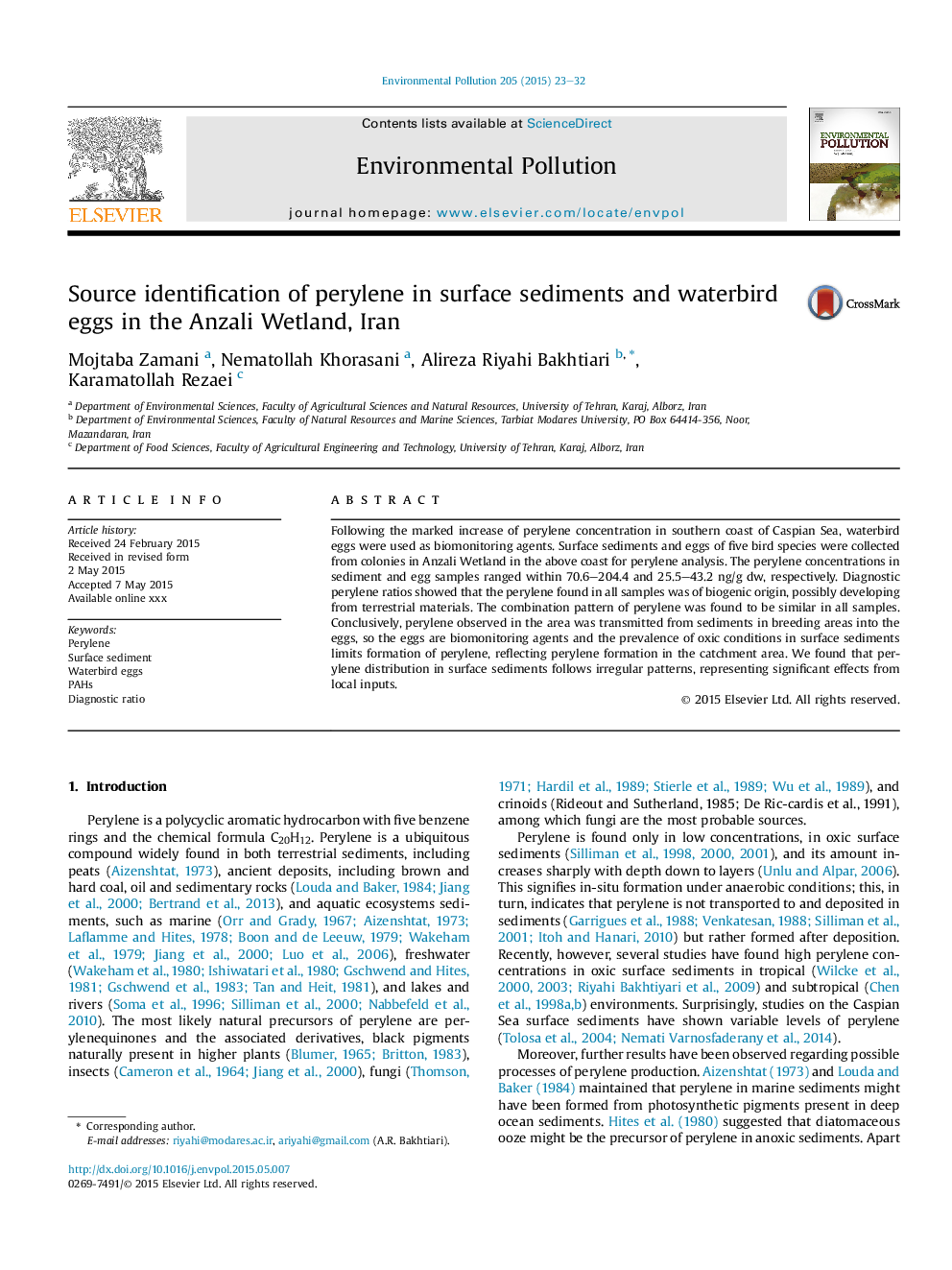| Article ID | Journal | Published Year | Pages | File Type |
|---|---|---|---|---|
| 6316615 | Environmental Pollution | 2015 | 10 Pages |
Abstract
Following the marked increase of perylene concentration in southern coast of Caspian Sea, waterbird eggs were used as biomonitoring agents. Surface sediments and eggs of five bird species were collected from colonies in Anzali Wetland in the above coast for perylene analysis. The perylene concentrations in sediment and egg samples ranged within 70.6-204.4 and 25.5-43.2Â ng/g dw, respectively. Diagnostic perylene ratios showed that the perylene found in all samples was of biogenic origin, possibly developing from terrestrial materials. The combination pattern of perylene was found to be similar in all samples. Conclusively, perylene observed in the area was transmitted from sediments in breeding areas into the eggs, so the eggs are biomonitoring agents and the prevalence of oxic conditions in surface sediments limits formation of perylene, reflecting perylene formation in the catchment area. We found that perylene distribution in surface sediments follows irregular patterns, representing significant effects from local inputs.
Related Topics
Life Sciences
Environmental Science
Environmental Chemistry
Authors
Mojtaba Zamani, Nematollah Khorasani, Alireza Riyahi Bakhtiari, Karamatollah Rezaei,
